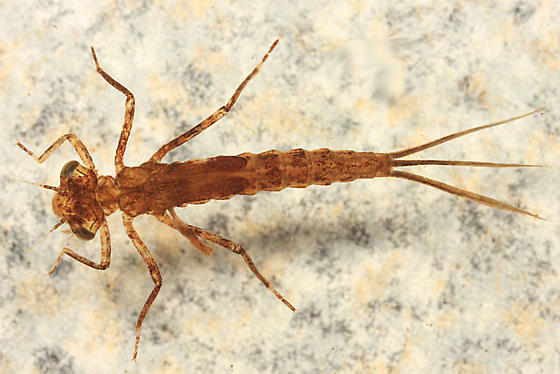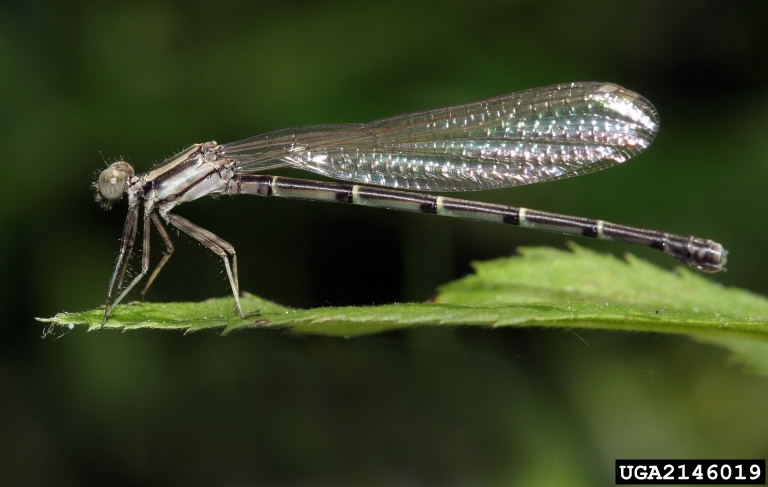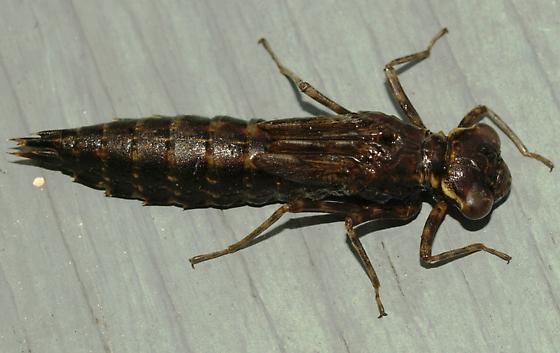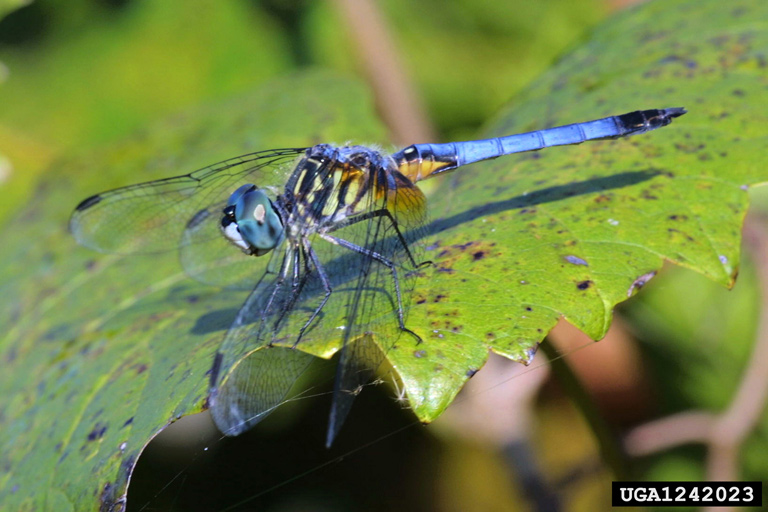 Dragonflies and Damselflies - May 24, 2017 Jeff Schalau, Agent, Agriculture & Natural Resources University of Arizona Cooperative Extension, Yavapai County Dragonflies and damselflies can be found in almost any wetland area and are common around the Verde River, its tributaries, stock tanks, and backyard water features. They come in a variety of sizes and colors and are often depicted in art because of their beauty. Dragonflies and damselflies belong to the insect order Odonata, which means “toothed”: their mandibles (jaws) have tooth-like ridges. Dragonfly fossils have been found that are more than 300 million years old and they were present during the age of dinosaurs. These ancient dragonflies had wingspans of up to 30 inches. Damselflies are smaller relatives of dragonflies. They are more delicate and not as adept at flying as dragonflies. Damselflies are also known as bog dancers, damsels, and devil’s darning needles. An adult damselfly has a long slender body, which is green, blue, red, yellow, black, or brown. At rest, dragonfly wings lie straight out to the sides while the damselfly holds its wings over its back, either together or spread out in a V-shape. Damselflies usually stay close to a pond’s surface, while dragonflies can zoom up into the air and out of sight. Adult dragonflies and damselflies are highly efficient predators and their favorite foods are flies, midges, winged ants, and mosquitoes. They often catch their prey in flight using their spine-covered legs and consume the prey using their toothed mandibles. Both dragonflies and damselflies have large eyes, short antennae, independently moveable front and hind wings, and a long, narrow abdomen: characteristics which make them especially efficient flying predators. Needless to say, both species are considered beneficial because they reduce nuisance insect populations. Adult dragonflies and damselflies often mate in the air, making a formation that is called a wheel. Females lay single eggs into some suitable vegetation such as dead wood or reeds near the edge of streams and ponds. These eggs drop into the water and hatch into naiads. Naiads are free living, aquatic predators that feed on other aquatic insects, including their own species. Larger naiads can eat young fish or may become food for other fish or frogs. Naiads of both dragonflies and damselflies have lower lip that can be extended like an underwater harpoon. They move rapidly by sucking water into their abdomen and then spitting it out like a jet engine. Damselfly naiads are narrow-bodied and have three feather-like appendages at the end of its abdomen which are used like gills for breathing and are whipped back and forth for movement. The Dragonfly naiad is stouter and has its breathing apparatus inside the abdomen. Naiads molt as they grow and develop for several months. Some species can take five years to mature. Scientists conducting invertebrate surveys look for dragonfly and damselfly nymphs (naiads) in watercourses because their presence indicates an oxygenated, healthy stream or river. When fully grown, they crawl out of the water onto a stick or stone and molt into the winged adult. The newly emerged insects are soft-bodied and may not develop full coloration and flight capabilities for several days. Many types of animals eat dragonflies. Birds such as swallows, kingbirds, and small hawks eat both adult dragonflies and larvae. Frogs catch them with their sticky tongues. Some types of fish jump out of the water to catch a flying or perched dragonfly. Their superior vision not only helps them hunt prey, but also helps them avoid being eaten by predators. While there are many suggestions for butterfly gardening. However, there are few for encouraging dragonflies. Properties with water gardens, ponds and fresh water can improve habitat for dragonflies and damselflies and by:
Follow the Backyard Gardener on Twitter – use the link on the BYG website. If you have other gardening questions, call the Master Gardener help line in the Camp Verde office at 928-554-8992 or e-mail us at verdevalleymg@gmail.com and be sure to include your name, address and phone number. Find past Backyard Gardener columns or provide feedback at the Backyard Gardener web site: http://cals.arizona.edu/yavapai/anr/hort/byg/. Dragonfly and Damselfly Photos  Damselfly naiad (from: http://bugguide.net/node/view/254494).  Damselfly adult (David Cappaert, Bugwood.org).  Dragonfly naiad (from: http://bugguide.net/node/view/315805).  Dragonfly adult (Russ Ottens, University of Georgia, Bugwood.org). |